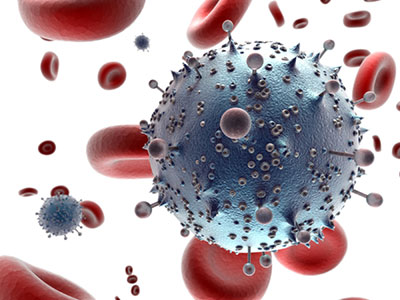The overarching concept of pathogen safety depends on safeguard measures, which are mainly focused on virus contamination, to ensure that only plasma from healthy donors is entering the manufacturing process. These measures constitute a "Safety Tripod" and include:
- Selection of Starting material: Donor screening/Donor exclusion
- Testing for pathogens
- Elimination of pathogens
Testing for pathogens is performed by Nucleic Acid Amplification (NAT) assays and enzyme-linked immunosorbent assay (ELISA) tests for relevant viruses, such as Human immunodeficiency virus (HIV), Hepatitis B virus (HBV), Hepatitis C virus (HCV), Hepatitis A virus (HAV) and Parvovirus B19. Further testing of the manufacturing pool by NAT ensures that only plasma suitable for manufacture enters the fractionation process.
The fractionation process itself includes multiple dedicated steps of pathogen removal/inactivation. These steps are designed to deal with much higher levels of virus contamination than would be encountered from any potential viral load from a donation from an infected donor with low levels of undetected viremia in case such a donation would enter the fractionation process.
Pathogen safety measures are not limited to safeguard against known pathogens, but are also aimed to prevent transmission of new and yet unknown pathogens. For example, when the virus causing Severe Acute Respiratory Syndrome (SARS) emerged, PPTA member companies performed individual studies that demonstrated the efficiency of their virus inactivation/removal steps for the SARS virus. With the appearance of variant Creutzfeldt-Jakob Disease (vCJD) manufacturers were faced with a unique challenge, because the causative agent is not a virus but a misfolded protein. PPTA member companies invested and continue to invest significantly in research and development to implement appropriate measures to protect against the potential transmission of vCJD causing prion proteins through plasma protein therapies.
Following the recent outbreak of the Zika virus (ZIKV) in the Americas PPTA’s Pathogen Safety Steering Committee (PSSC) released a statement confirming that based on their research with similar viruses and ZIKV models, plasma protein therapies are safe. PPTA member companies are currently performing individual studies with ZIKV.
Responding to known and unknown challenges to the safety of plasma protein therapies requires continuous research to develop methods for both the detection of pathogens as well as methods for the elimination of pathogens that could possibly enter the manufacturing process. PPTA's member companies continue to demonstrate leadership and innovation that protect patients and donors through state-of-the-art collection procedures and viral inactivation and manufacturing protocols that have been fine-tuned over decades.
The PSSC is the globally accepted industry expert group on issues related to the safety of plasma protein therapies. PSSC is recognized by the Food and Drug Administration (FDA) and the European Medicines Agency (EMA) as a valuable contributor within relevant expert groups.
Pathogen Safety
- Consolidated industry data
- Roth, NJ et al. "Nanofiltration as a robust method contributing to viral safety of plasma‐derived therapeutics: 20 years' experience of the plasma protein manufacturers." Transfusion. August 19, 2020.
- Cai K, Gröner A, Dichtelmüller HO, Fabbrizzi F, Flechsig E, Gajardo R, von Hoegen I, Jorquera JI, Kempf C, Kreil TR, Lee DC, Moscardini M, Pölsler G, Roth NJ. Prion removal capacity of plasma protein manufacturing processes: a data collection from PPTA member companies. Transfusion. 2013 Sep;53(9):1894-905. doi: 10.1111/trf.12050. Epub Dec 17, 2012.
- Cai, K. et al. "Prion removal capacity of plasma protein manufacturing processes: A data collection from PPTA member companies." Transfusion. Dec 17, 2012.[Epub ahead of print]
- Creutzfeldt-Jakob Disease and Variant Creutzfeldt-Jakob Disease (2012)
- Dichtelmüller HO, Biesert L, Fabbrizzi F, Falbo A, Flechsig E, Gröner A, von Hoegen I, Kempf C, Kreil TR, Lee DC, Pölsler G, Roth NJ. Contribution to safety of immunoglobulin and albumin from virus partitioning and inactivation by cold ethanol fractionation: a data collection from Plasma Protein Therapeutics Association member companies. Transfusion. 2011 Jul;51(7):1412-30. doi: 10.1111/j.1537-2995.2010.03003.x. Epub Jan 20, 2011.
- Dichtelmüller, H.O. et al. "Contribution to safety of immunoglobulin and albumin from virus partitioning and inactivation by cold ethanol fractionation: a data collection from Plasma Protein Therapeutics Association member companies." Transfusion 51.7 (2011):1412-1430.
- Commission Directive 2004/98/EC: Deferral criteria HTLV 1 and 2 (2011)
- WNV meeting in Thessaloniki, January 2011 (2010)
- Dicthelmüller, H. O. et al. "Robustness of solvent/detergent treatment of plasma derivatives:a data collection from Plasma Protein Therapeutics Association member companies." Transfusion 49 (2009):1931-1943.
- Dichtelmüller HO, Biesert L, Fabbrizzi F, Gajardo R, Gröner A, von Hoegen I, Jorquera JI, Kempf C, Kreil TR, Pifat D, Osheroff W, Poelsler G. Robustness of solvent/detergent treatment of plasma derivatives: a data collection from Plasma Protein Therapeutics Association member companies. Transfusion. 2009 Sep;49(9):1931-43. doi: 10.1111/j.1537-2995.2009.02222.x. Epub May 20, 2009.
- Bauman, P.A. et al. "Critical factors influencing prion inactivation by sodium hydroxide." Vox Sanguinis 91.1 (2006):34-40





